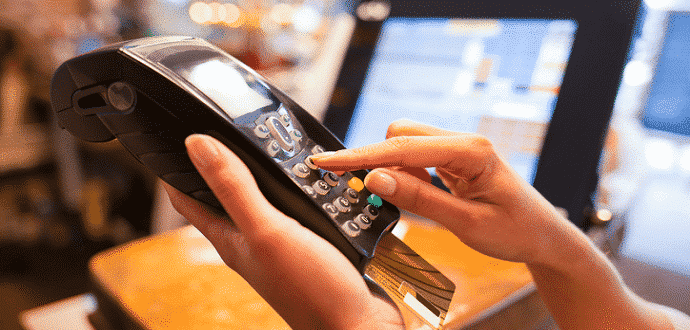Restaurant Marketing Ideas & Trends
Why is it Important to Follow Restaurant Marketing Trends?
Identifying and following marketing trends is crucial to every business’s success and helps brands remain relevant. At IndoorMedia, our marketing specialists help restaurants and other businesses identify upcoming trends. Restaurant business owners should follow marketing trends for the following reasons:
1. Helps restaurants stay ahead of the competition
Identifying marketing trends helps brands stay one step ahead of the rest and maintain their relevance in the market. Customers consume news from different sources daily. As such, the best way to ensure potential customers remain loyal is to embrace these developments. Using AI technology, IndoorMedia marketing specialists scan through millions of media clips to identify outstanding trends in the restaurant industry. With this, we can provide insightful details that can help restaurants make guided decisions.
2. Ensures marketing content is in the right direction
Analyzing current trends helps restaurant businesses tailor their marketing content better to fit the brand’s voice and emerging trends. Creating content based on relevant, emerging trends will encourage customers to engage with the content and share frequently. However, with a lot of content being generated, customers are increasingly becoming aware of the quality of content they demand.
As such, not being updated on the current trends means restaurants won’t create content relevant to their audience and can’t capture attention.
3. Helps restaurants identify new marketing opportunities
Being up-to-date also allows restaurants to identify better opportunities to market their business. Marketing managers learn what they might need to improve in their marketing strategies by following up on marketing trends.
Popular Restaurant Marketing Trends of 2023
Discover the leading restaurant marketing strategies of 2023 that are revolutionizing the industry and attracting food enthusiasts globally. Stay ahead with these transformative trends.
Email marketing
Email marketing boosts awareness and allows restaurants to connect easily and affordably with customers. Email marketing for restaurants helps retain diners and convert email subscribers into loyal customers. Surprisingly, email marketing has a much higher ROI than social media and influencer marketing.
However, with every restaurant ready to leverage email marketing, marketing managers can only stand out from the competition by embracing email marketing trends, such as:
Discounts and promotions
Restaurants can use emails to offer discounts to customers who purchase from the restaurant. Offering a complimentary dessert for every second drink ordered or a prize for more money spent increases the business’s bottom line.
Eye-catching coupons
Image is a crucial retention factor, especially for customers who view email marketing messages directly from their phones. Colorful and mouth-watering foods and drinks can tantalize customers’ senses. Customers will certainly focus on the email message accompanying such an appealing photo.
Music and live shows
Many customers prefer having a dining experience with music. As such, introducing a classy instrumental musical background can heighten the restaurant’s mood. A live show and food special, such as barbecues or Mexican food, also enhance customer experience. For this, restaurants can send automated emails to customers about the new dining experience.
First-timers get their first drink free
Restaurants can also use email marketing to entice new customers to try new dining options. Most customers reluctantly try something new in restaurants. Luring customers into trying something new is a challenge for most marketing managers. However, making such offers to customers is a great idea. With the right wording and targeting, restaurants can broaden their customer’s dining options.
Chef profile
Restaurants can also use email marketing to cultivate better personal relationships between the business and customers by familiarizing them with restaurant workers, starting with the head chef. Using an interview-style marketing email, restaurants can highlight their head chef’s personal interests, hobbies, and how they create culinary masterpieces. This should include pictures of delicious servings and the chef in action.
Highlight a menu item and seasonal menu overview
Highlighting specific menu items can differentiate the restaurant from the competition. Notifying customers of limited menu items or foods that are making a comeback appeals to new and old customers. Restaurants should also give customers an overview of seasonal menu items, such as during the holiday season.
Reviews and awards
While restaurant marketing is tasking, showing social proof can improve marketing efforts and results. Marketing managers can hack this by featuring reviews from food critics and magazine articles in their marketing emails. This shows prospects and customers that trusted industry experts can vouch for the business.
Local SEO
Maintaining a local search presence is challenging, especially for franchise restaurants with multiple locations. This makes it overly important for restaurant owners to establish a definitive local search strategy. Effective local SEO restaurant marketing ideas include:
Listings management
Local listings are a must for restaurants. Failing to list restaurants on key directories, such as Bing, Apple, Yelp, and Google, makes it seem like the restaurant doesn’t exist for online searchers. Marketing managers should also list their restaurants on small directories, such as Zomato, Facebook, Yellow Pages, TripAdvisor, and GrubHub. Being listed on online directories is a ranking signal.
Review management
Review scores are crucial determiners of where a location ranks. Google and other search engines primarily consider replies to reviews as ranking signals. Besides, 59% of those aged below 23 consider online reputation before making purchase decisions at restaurants. Restaurants with a lot of reviews often provide great insight to prospects and other customers.
City Pages
Restaurants can also use city pages to promote their local SEO. Most internet searches are currently location-based. For instance, customers will specifically look for “Italian restaurants in Texas.” Having specific city pages can improve a restaurant’s rankings and provides an opportunity to create unique content for the city.
Unique content
Restaurants should also create unique content to stand out locally. Using hyperlocal content highly appeals to local search directories. For this, restaurants should consider two unique approaches. The first approach is highlighting specific neighborhoods, such as major highways, stadiums, arenas, universities, and other landmarks.
The second approach is mentioning what differentiates the restaurant from others. For instance, do they have specific events or promotions? This includes weekly kids’ discounts, sporting events, live music, and more. The primary goal of hyperlocal content is to make the restaurant stand out locally.
Restaurant paid advertising
Paid ads are another effective digital marketing strategy that restaurants should consider. It helps restaurants attract new guests and retarget repeat customers. Paid ads have an unbelievable ROI averaging 200%, which makes them better than most digital marketing strategies.
Marketing managers should consider the rates, define the restaurant’s target audience, and effectively spread their budgets to use paid ads. Top trending paid ads to consider include:
Restaurant Google ads
Most customers start by searching for nearby restaurants on Google. As such, marketing managers shouldn’t ignore the importance of Google Ads. Unlike other marketing tactics, Google search ads provide a 24/7 stream of prequalified leads. Benefits of using Google ads include:
- Access to new customers who are looking for specific types of food or dining options
- Retargeting existing customers increases revenue and boosts customer loyalty
- Converts web customers into app guests
- Effective in advertising new franchise locations
Google Display ads
Google Display features millions of websites that restaurants can target to advertise their menu. Marketing managers should target sites existing and potential customers visit daily for higher click-through rates and conversions. Google Display ads benefits include:
- Connects restaurants with guests from different locations
- Restaurants can find new quests by targeting specific sites, such as displaying ads on restaurant review websites
- Increases brand awareness as restaurants can access a large audience
Facebook and Instagram ads
Many customers use social media to discover new things, including restaurants. Facebook and Instagram are top platforms to consider for restaurant paid ads marketing. 49% of Facebook users find new restaurants on the platform, while 75% of Instagram users visit a restaurant after coming across a paid post.
The benefits of using Facebook and Instagram ads include:
- These platforms have extensive targeting capabilities, which makes it easy to find new customers
- Simplifies targeting of existing customers
- Access to Facebook Messenger and the marketplace allows restaurants to complement their marketing efforts
- Access to Instagram channels, such as reels, in-feed posts, and stories
YouTube ads for restaurant marketing
YouTube is commonly ignored but can provide qualified leads for restaurants. With more than one billion daily watch hours, restaurants can drive a lot of traffic from YouTube ads. These ads allow restaurants to advertise to new guests on relevant videos. For instance, a restaurant promotional ad can be played alongside a video of burger recipes.
Building a paid ad strategy can prove challenging for various reasons. Fortunately, restaurants don’t have to struggle. Working with our team of marketing specialists gives restaurant owners the freedom to focus on providing quality services as we handle what we do best.



